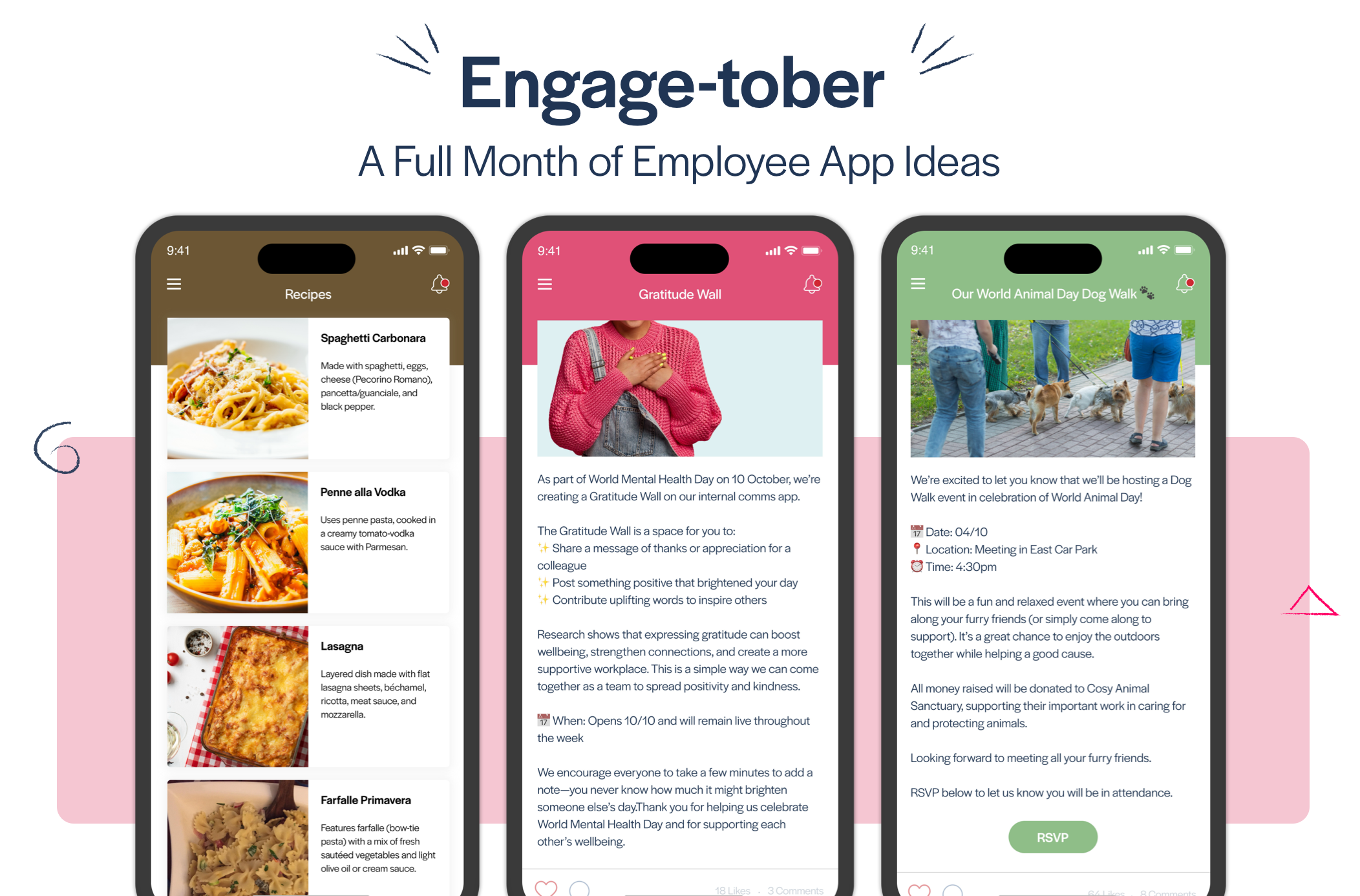
Blog
What is the 'Employee Experience'?
The term ‘employee experience’ has been around for a while but is only just starting to be seen as a key driver in improving business performance. So what exactly is the employee experience? And why is it important to have an employee experience strategy in place?

The term ‘employee experience’ has become one of the key buzzwords of the past year, but it’s by no means a new term or idea. There’s a growing correlation between employee experience and employee engagement, and companies with high engagement are really seeing the benefits that investing in their employees is having on their business performance. So much so that 92% of HR leaders have now confirmed employee experience as one of their top priorities in 2021.
What exactly is the 'employee experience'?
Employee experience, commonly abbreviated to EX, is the journey an employee takes with an employer. The employee experience will vary from company to company, but typically describes all the interactions that happens along the employee life cycle: from the start of the journey at the recruitment stage, through to the employee departing the business, and every stage and experience in between, including the role, relationships, physical workspace and well-being.
What is the difference between employee experience and employee engagement?
There are several interpretations on the difference between employee experience and employee engagement; however, the most common is that the employee experience is the entire journey your employee takes with you, while employee engagement is a part of that journey and the output or end goal you are aiming for. In other words, if you improve your employees’ experience, you will conversely increase your employees’ level of engagement.
The shift from the focus on employee engagement to employee experience has been driven by several factors, including:
- Social media and online reviews – word of mouth is fast becoming the most trusted source of information for people, and online reviews and social media comments can make the difference between a company being seen as an employer or supplier of choice, or one to avoid altogether.
- Finding and keeping the best employees – employers want both to hire both talent and ‘good fit’ candidates in order to see a return on investment, but the tides have turned and today’s jobseekers now have greater expectations of what a company can do for them to make a role or career worth pursuing. So, employers need to differentiate themselves from the competition in order to hire the best employees.
- The changing shape of business – businesses are now having to respond and adapt quickly to disruption in the marketplace and other economic forces outside of their control, which means having to review the way they operate on a more regular basis and how it will impact their teams.
Why is the employee experience important?
The employee experience takes into account employee well-being, and findings from Aon’s 2021 Global Wellbeing Survey have revealed a link between employee well-being and business results, with companies that have a strong and focused well-being strategy outperforming those who offer standalone or ad-hoc well-being initiatives.
The benefits of prioritising well-being, engagement and a positive company culture are multifold. In improving the employee experience, companies have seen knock-on effects on their HR and sales metrics, such as reduced staff turnover and an increase in employee productivity and satisfaction: consequently, leading to an increase in customer acquisition, satisfaction, retention. All of which culminates in a healthy return on investment, greater overall profit and a glowing company reputation.
Good employees will always be a company’s greatest investment, but that investment doesn’t end as soon as the employee is onboarded. Investing in your employee experience is crucial to creating a happier and more engaged workforce.

As we previously mentioned, the employee experience is the journey an employee takes with you as their employer. Like any journey, it’s helpful to map out the route and plan for each of the different stages – or touchpoints – that those on the journey will typically encounter. In the context of the workplace, these touchpoints are valuable opportunities for employers to gather feedback about the experience and consider ideas for improvement. The main life cycle stages include:
Recruitment – the employee experience starts long before someone walks through your door on Day One as an employee. Before they’ve even been offered the role, they’ve already built an impression of your company, its values and what it might be like to work for you, based on their experience of your recruitment process. The recruitment stage is a great opportunity to get your employees excited about your company from the get-go, so make the application process as clear and straightforward as possible.
Onboarding – have you established an efficient and welcoming onboarding process that will set your new employee up for long-term success? Following on from the recruitment stage, continuing to set the tone during onboarding can have a hugely positive effect on employee engagement and productivity. Set up an induction plan that introduces them to your company, your product or service, and the rest of your team. Spend time familiarising them with their new role and set realistic goals and expectations. Provide them with the tools and training they need to do their job effectively. Embed them in the company’s vision, values, strategy and culture. And above all, give them a warm welcome to help banish any ‘new job jitters’ they will naturally have.
Development – for many employees nowadays, a job isn’t simply a job: it’s an opportunity to grow, learn and develop, both personally and professionally. So, make this opportunity readily available to them on an ongoing basis. Offer regular performance reviews and 1:1 sessions. Ask them what they need in terms of support and training. Work with them to set goals and plans to further develop their skills.
Retention – to keep your employees engaged and motivated, give them a purpose. People want to know they are making a difference and that their work is feeding into their company’s bigger picture. So, make sure they know how their role contributes to higher-level business objectives and ties in with the company’s vision. Be transparent about what your company wants to achieve and give them clear direction on how they can help the company to get there. And don’t forget to acknowledge their accomplishments along the way. When we feel appreciated and valued for our performance, work can become more meaningful and we feel more inclined to keep up the good work.
Offboarding – nobody ever wants to lose a valuable employee, but sadly it’s often unavoidable and can happen for any number of reasons, including circumstances outside of an employer’s control. However, it’s still an important part of the employee experience and will be the lasting impression you leave your departing employee with, so make it a positive one. Take time to understand their reasons for leaving and give them the opportunity to give feedback. Make the offboarding process straightforward to make the transition easier for them. And remember to thank them for all their efforts and contribution to your company.

Measure the impact by listening to your employees
As we’ve seen, there are a multitude of opportunities to listen to your employees and collect valuable feedback throughout their employee journey. The employee experience is a continuous process and should be tracked and measured over the long term.
Employees want to know that their voices are being heard, so keep lines of communication open and make feedback an ongoing part of your employee experience strategy, using regular surveys to get in-depth insights into employee satisfaction and well-being, and identify areas for improvement. Always remember to keep the focus on improving the employee experience and resulting business outcomes.
Use insights to improve your employee experience
The feedback you get from the surveys is invaluable, but only if you actually use it to create implement change. The next and final step is to take action by using the survey insights to create a better employee experience that make your workforce want to come into work.
Don’t try to fix everything at once – make small, manageable changes to begin with and over time these changes will compound into a better overall experience. Improving the employee experience is a never-ending process and it will require time, commitment and financial investment, but the long-term benefits far outweigh the short-term costs and you’ll be rewarded with happier employees, greater productivity and a healthier bottom line.










